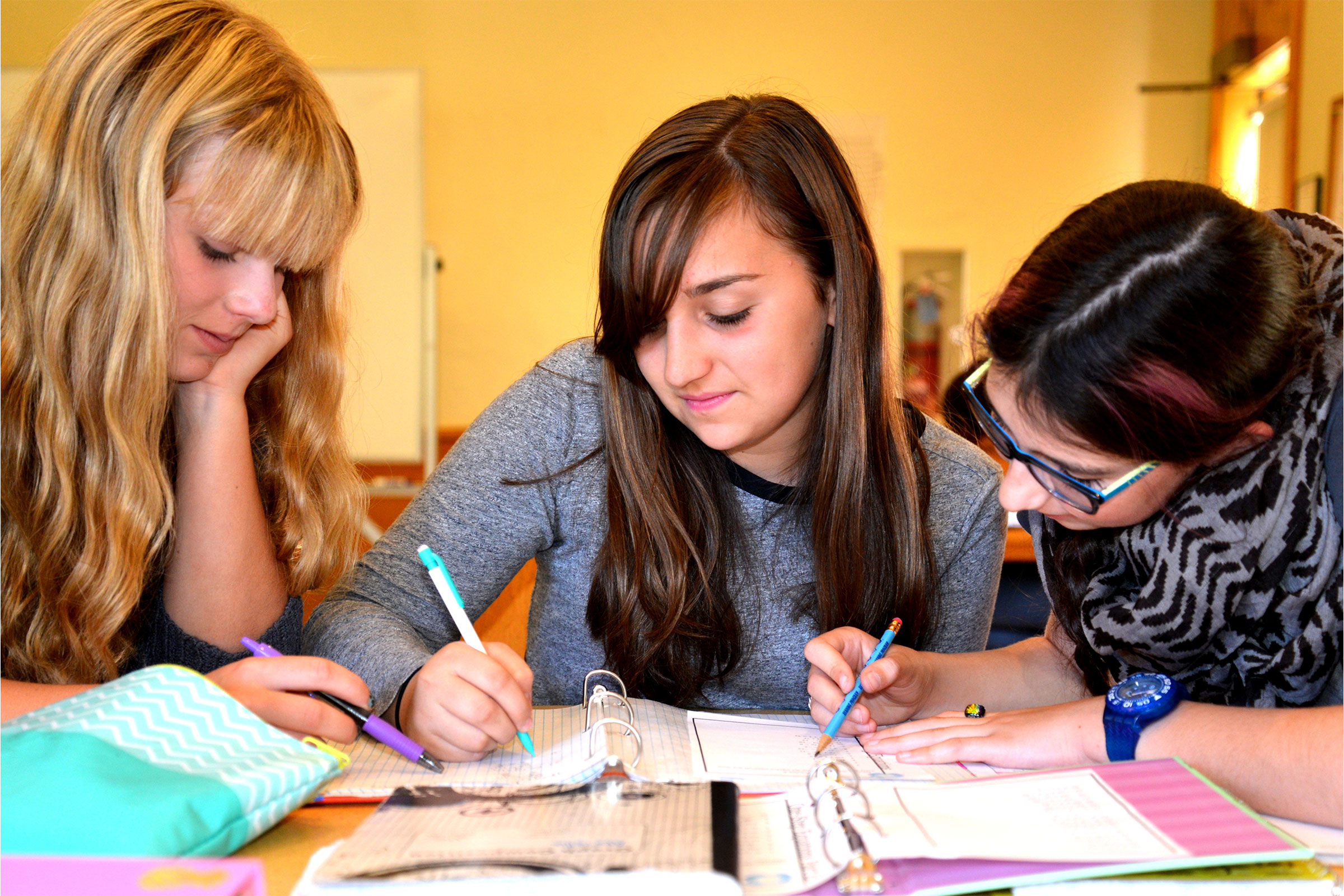Adolescents occupy a space where they are no longer children but have not yet oriented themselves as adults. Their guiding adults, family members, trusted friends, and teachers must have a solid understanding of their characteristics and needs to support their self-construction. Montessori identified two critical needs of the adolescent:
“These two needs of the adolescent; for protection during the time of difficult physical transition, and for an understanding of the society which he is about to enter to play his part as a man, give rise to two problems that are of equal importance concerning education at this age.” Maria Montessori, From Childhood to Adolescence
Physical growth and how you can support the adolescent
This intense time of change parallels the growth of the young child. However, the adolescent is fully conscious of the changes in their body in a way that the young child is not, causing uncertainty and anxiety. There are also many changes happening to the structure of the brain. Neural pruning eliminates childhood synaptic connections and forms new pathways. The brain continues to grow more complex until the mid to late 20s, with those areas in the prefrontal cortex responsible for impulse control and executive functioning being the last to mature.
The eventual results of these changes are the ability for metacognition, dealing with ambiguity, and empathy towards others. Still, the adolescent needs the support of a prepared adult to navigate these difficult times. When you ask a young adolescent, "What happened - you knew this yesterday?" and they respond, "I don't know," they are not being obstinate - they really may not know because of the changes in their neural connections.
The rapid physical growth of adolescents results in many changes, such as fatigue, changes in sleep patterns, and a weakened constitution, making them more susceptible to physical or mental health issues. Guiding adults can provide opportunities for activities that support healthy development, such as:
- Regular movement helps the adolescent orient to their new body.
- Expressive movement, such as sports, dance, fine motor work, etc., helps satisfy the need for creative expression.
- Productive movement connecting hand and head, such as the manual work of maintaining the home or outdoor environment
- A healthy diet and plenty of sleep
- Exposure to nature provides the opportunity to choose solitude or time for reflection.
Psychological growth and how you can support the adolescent
The rapid psychological growth of the adolescent results in what Montessori described as "fragile and volatile emotions, a sensitivity to criticism, a lack of confidence, and a sense of expectation."
Adolescents face the transition of leaving the family and entering the adult world, which is exciting and scary for both the adolescent and family members. They are also trying to figure out who they will be and what role they'll play in society at large. This need for psychological self-determination leads to exploring their internal and external environments, resulting in increased risk-taking, impulsivity, and egocentrism. But they are also learning to think critically and show the beginnings of metacognition.
Adolescents live in a time of conflicting feelings. In creative expression and other work, they want to be recognized but are insecure and self-critical. They are testing values and paradigms of the world but are intolerant of shortfalls or hypocrisy in others. They are also very sensitive to social justice and the dignity of people.
The chief symptom of adolescence is a state of expectation, a tendency towards creative work, and a need to strengthen self-confidence. Guiding adults can support adolescents by offering psychologically safe conditions that provide opportunities to understand better the adult society they are about to join. These conditions include:
- Supportive relationships based on respect and personal dignity
- Exploration, especially issues of morality and areas of social or intellectual risk
- Self-expression, creative work
- Collaboration on productive work with peers or adults, which contributes to self-confidence, independence, self-sufficiency, and adaptability
- Solitude for reflection
The Adolescent: "A Social Newborn" emerging
Overall, early adolescence is a time for experimentation and exploration (often unconsciously), with the individual trying out new roles, new experiences, and new ways of doing things while relying on the safety and security of their close peer group. Later adolescence is a time for the individual to examine their previous experiences and figure out what will stick with them as they transition to the adult world more consciously. The peer group is still important but less immediately so than the adult world to which they will soon be transitioning. They can abstract and think critically about their work and societal role.
Adults seeking guidance to support adolescents can reflect on what they did to help them when they were young: provide opportunities for movement, expression, choice, productive work contributing to family (practical life), and the chance to work with an extended social group. Adolescents crave clear limits with natural consequences, the opportunity to take healthy risks, and the surety that there is a constant, authentic, respectful adult there to listen and support them.
Tina Quirt Booth, AMI 12–18 Trainer
